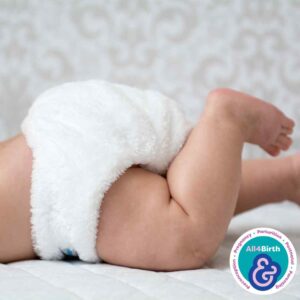Infant Massage: The Power of Human Touch
By Avril Flynn
Midwife and Childbirth Educator
The wish to touch and interact with little babies has been something held as sacred in many different cultures but infant massage as a distinct action is a fairly recent phenomenon in western society
Touch as the foundation
In my practice, I have no hesitation in recommending infant massage as an excellent way to encourage maternal and infant bonding. We know that the first year, and the first few months of life in particular, lay the foundation for positive attachment, development and cognitive ability.1,2 The wish to touch and interact with little babies has been something held as sacred in many different cultures but infant massage as a distinct action is a fairly recent phenomenon in western society.3 There is an increasing body of evidence to support its benefits, of which the aforementioned positive attachment is just one.1,2,4 Among the other benefits that have also been observed in both term and pre-term infants are weight gain, improvement in colic, gastroesophageal reflux disease (GERD) and hyperbilirubinemia, and improved skin condition.5 Although there are obvious limitations to small sample size and possible bias in some of these studies,6 they nevertheless are still very encouraging.
One thing we know for sure is that infant massage carries no risk of harm.
Benefits of infant massage
The benefits are not just for the infant. Parents, and mothers who may have pre-existing anxiety or mental health issues in particular, demonstrate increased rates of breastfeeding self-efficacy, awareness of their baby’s cues and a decrease in stress.2,6 There is also some evidence that birthing people’s mood and sleep is improved generally by infant massage and that it provides a good source of postnatal peer support.2
During the COVID-19 pandemic’s seemingly never-ending recent lockdowns, we learned to our detriment of the difficulties faced by new parents and as professionals. Midwives have been on the frontline of witnessing the loneliness and challenges of forced but necessary home confinement for families, demonstrated by the increased reports of anxiety and stress. Infant massage may be a way to combat isolation and increase connection. Although it cannot be taught in person at present, it can be instructed online or via pre-recordings. This means it is a cheap and effective way to allow parents to be familiar with and enjoy touching their babies, and for the baby to receive all the benefits of that touch in return.
References
- Güral A, Polat S. The Effects of Baby Massage on Attachment between Mother and their infants. Asian Nursing Research. 2012;6(1):35-41.
- Cooke A. Infant Massage: The practice and evidence-base to support it. British Journal of Midwifery. 2015;23(3):166-169.
- Field T. Infant Massage Therapy Research Review. Clinical Research in Pediatrics. 2018;1(2):1-9.
- Rahmatnexhad L, Sheikhi S, Didalaroo A, Fakoor Z, Iranidokht M. The Impact of Baby Massage Training on Awareness, Perceived Stress and Breastfeeding Self-Efficacy of Mothers with Hospitalized Neonate. International Journal of Pediatrics. 2018;6(10):8297-8306.
- Smith V. Cochrane Corner. Massage promoting mental and physical-health for infants-six months. https://www.all4maternity.com/ cochrane-corner-massage-promoting-mental-physical-health-infants-six-months/. Published 2014. Accessed February 1, 2021.
- Field T. Infant Massage Therapy Research Review. Clinical Research in Pediatrics. 2018;1(2):1-9.









